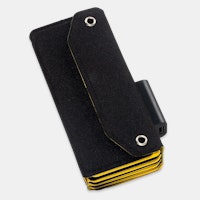Click to view our Accessibility Statement or contact us with accessibility-related questions








Beginner, wanting to step up the experience!

search
close
Sort by: Newest
keyboard_arrow_downaznikko
3
May 13, 2018
I appreciate all of the shared guidance and feedback - thank you! I do feel much better about having a cropped censor. I've began watching more videos on YouTube and see that many photographers, who strike me as very experienced, used APS-C and produce very high quality work using techniques mentioned by all of you. Very valuable insight!

SteveMandHK
71
May 9, 2018
Some other things I have found helpful (besides taking pictures every day) to improve your photography:
1) Go to photography exhibitions and find images that speak to you, then think about what it is that draws you to it (what are the elements).
2) Learn about composition - look up Eric Kim's videos on YouTube where he breaks down the composition of photos by the greats like Henri Cartier Bresson. You could also look up the Rule of Thirds as a start.
3) College courses are good because you are given assignments which make you think before you shoot and then you have the group reviews to talk about your work.
4) Some camera shops will also do free or inexpensive photo walks and if they are sponsored by a vendor a pro photog may be leading it.
5) Learn color theory - there's a reason why certain colors look good together in an image
Good (photo) shooting!

TiffanyPoodleslide
1402
May 7, 2018
1- Take pictures, take pictures, take pictures, take pictures, take pictures.
This teaches you your gear like nothing else can. While you are at it, try to find a DIFFERENT way to see something, take the same picture over and over but find different ways to take it, like differing your depth of field, differing aperture, speed, etc. and shift your viewpoint. Go back 5 hours later and take the same photo, see what the change in light tells you.
2-Understand that LIGHT IS EVERYTHING. It's what allows us to see, after all, and using LIGHT is the way you make photography happen.
3- Consider a basic photography course at a college near you. Can't hurt, not at all.
That's the shortest-yet-fairly-comprehensive answer I can give, I consider these things to be essential, especially if you already have the gear.
That's the shortest-yet-fairly-comprehensive answer I can give, I consider these things to be essential, especially if you already have the gear.
tom.benedict
86
May 5, 2018
No buyer's remorse for that setup. Always keep in mind that the camera and lens is a means to an end, not an end in and of itself. As you point out at the end of your post, with experience and an artistic eye, you will make compelling photos regardless of your tools.
To add to what BF_Hammer said:
One of the best tools for improving your photography is to look outside the medium at other art forms. Find your local art museums and become a regular. If you can, pick up some books of the Dutch Masters. Rembrandt and Vermeer made amazing use of light. Pick up coffee table books of landscapes, the impressionists, and yeah, photography books. Mark the ones that really catch your eye, and then start picking apart why they do.
Paintings and photos really benefit if they have one clear subject. This ties into what BF_Hammer was saying about backgrounds. If the background is drawing the eye more than the foreground, the background had better be the subject of the photograph. (This is typical with landscape photography: by having a clear foreground object that ties the viewer into the more distant landscape, their eye is drawn into the frame as a whole.) If the subject is the foreground object, the background needs to draw the viewer's eye back to the foreground. Strong leading lines in the background can be used this way, but be careful not to over-emphasize the role of the background at the expense of the subject.
The eye is drawn toward bright things. If there are bright patches in the background, the viewer will look at them. Rembrandt and Vermeer both used this by making the subject lighter and the rest of the scene more muted. Your last photo, of the big butterfly valve, uses this, too. (And it works!) But this is also why the photo of the sun through the trees has issues with the buildings in the background. They're competing with the subject. (Just for grins, try cropping that photo tighter on the sun and the trees, omitting the background buildings and sky. Put the sun off-center and see what it looks like.)
The eye is also drawn toward the things that are in sharpest focus. One of the reasons why portrait photographers tend to use fast primes is that they can shoot wide open and blur out everything except the subject. If you look closely at a bunch of portraits, you'll almost always find one or both eyes are in tack-sharp focus. The tip of the subject's nose can go soft so long as the eyes are sharp. The effect is to draw the viewer in and invite them to focus on the subject's eyes.
Back to the topic of leading lines, when photographing someone in profile (as in the case of your macaw), viewers tend to be drawn to the subject's eyes, then in the direction the subject is looking. (The macaw is looking at the camera, but viewers will still move their eyes in the direction the macaw is facing.) If that faces back into the frame, the viewer is more likely to keep looking at the photograph. If it leads out of frame, they tend to move on. As weird as this may sound, it's common fare with portraiture and with magazine cover shots. Just as an exercise, try cropping out the left side of the macaw shot, keeping the bird and everything to the right of it. Turn it into a vertical. (And then see the bright spots in the background. BF_Hammer is right on the money about paying attention to backgrounds. They make or break a photo.)
Try the same editing technique on the tree trunk and ivy. Crop out the left side of the frame, bisecting the tree trunk and using it to form a border on the left side of the image. Keep the ivy completely in the frame. Turn it into a vertical. The sunlight on the leaves is brighter than the highlights in the background. See how it works and if you like it more or less than the original.
If your main draw is automotive photography, the same things I said earlier about drawing inspiration from other sources applies. Pull up ad copy for high end cars. Lamborghini is particularly careful with their ad photography. Most of them are shot as a quarter view (showing side plus front or side plus rear), and have very clean backgrounds. In the instances where the background is lighter than the foreground, it's almost always offset by being a different texture, tonality, or color than the foreground car. Lots of info out there on automotive photography, and lots of material to draw inspiration from.
Find what you like, try to do what you find. Along the way you'll come up with new ideas you'll want to play with. Do it. Find what works and what doesn't. Keep using what works, discard what doesn't or figure out why it doesn't work and try again with fresh eyes.
When evaluating your own work, try to be your own harshest critic. Back when I was shooting film, I tried to find the best photo out of a single piece of film. For 35mm, that meant one in every 36 shots. With digital, I try to pick the best photo of the day. Try to understand why that one photo made the cut, and when you go back out put more of that into what you do the next day. Then cull just as ruthlessly. Wash, rinse, repeat. It hurts like hell to kill your darlings this way, but you will improve rapidly.
I've probably rambled about as long as I should on this subject. One last tip: If you ever get discouraged, screw all the advice anyone gave you (especially me!), grab your camera and one lens, leave the rest behind and just get out and do photography for the sheer joy of it. In the end that's what will keep you going. Never lose sight of it.
To add to what BF_Hammer said:
One of the best tools for improving your photography is to look outside the medium at other art forms. Find your local art museums and become a regular. If you can, pick up some books of the Dutch Masters. Rembrandt and Vermeer made amazing use of light. Pick up coffee table books of landscapes, the impressionists, and yeah, photography books. Mark the ones that really catch your eye, and then start picking apart why they do.
Paintings and photos really benefit if they have one clear subject. This ties into what BF_Hammer was saying about backgrounds. If the background is drawing the eye more than the foreground, the background had better be the subject of the photograph. (This is typical with landscape photography: by having a clear foreground object that ties the viewer into the more distant landscape, their eye is drawn into the frame as a whole.) If the subject is the foreground object, the background needs to draw the viewer's eye back to the foreground. Strong leading lines in the background can be used this way, but be careful not to over-emphasize the role of the background at the expense of the subject.
The eye is drawn toward bright things. If there are bright patches in the background, the viewer will look at them. Rembrandt and Vermeer both used this by making the subject lighter and the rest of the scene more muted. Your last photo, of the big butterfly valve, uses this, too. (And it works!) But this is also why the photo of the sun through the trees has issues with the buildings in the background. They're competing with the subject. (Just for grins, try cropping that photo tighter on the sun and the trees, omitting the background buildings and sky. Put the sun off-center and see what it looks like.)
The eye is also drawn toward the things that are in sharpest focus. One of the reasons why portrait photographers tend to use fast primes is that they can shoot wide open and blur out everything except the subject. If you look closely at a bunch of portraits, you'll almost always find one or both eyes are in tack-sharp focus. The tip of the subject's nose can go soft so long as the eyes are sharp. The effect is to draw the viewer in and invite them to focus on the subject's eyes.
Back to the topic of leading lines, when photographing someone in profile (as in the case of your macaw), viewers tend to be drawn to the subject's eyes, then in the direction the subject is looking. (The macaw is looking at the camera, but viewers will still move their eyes in the direction the macaw is facing.) If that faces back into the frame, the viewer is more likely to keep looking at the photograph. If it leads out of frame, they tend to move on. As weird as this may sound, it's common fare with portraiture and with magazine cover shots. Just as an exercise, try cropping out the left side of the macaw shot, keeping the bird and everything to the right of it. Turn it into a vertical. (And then see the bright spots in the background. BF_Hammer is right on the money about paying attention to backgrounds. They make or break a photo.)
Try the same editing technique on the tree trunk and ivy. Crop out the left side of the frame, bisecting the tree trunk and using it to form a border on the left side of the image. Keep the ivy completely in the frame. Turn it into a vertical. The sunlight on the leaves is brighter than the highlights in the background. See how it works and if you like it more or less than the original.
If your main draw is automotive photography, the same things I said earlier about drawing inspiration from other sources applies. Pull up ad copy for high end cars. Lamborghini is particularly careful with their ad photography. Most of them are shot as a quarter view (showing side plus front or side plus rear), and have very clean backgrounds. In the instances where the background is lighter than the foreground, it's almost always offset by being a different texture, tonality, or color than the foreground car. Lots of info out there on automotive photography, and lots of material to draw inspiration from.
Find what you like, try to do what you find. Along the way you'll come up with new ideas you'll want to play with. Do it. Find what works and what doesn't. Keep using what works, discard what doesn't or figure out why it doesn't work and try again with fresh eyes.
When evaluating your own work, try to be your own harshest critic. Back when I was shooting film, I tried to find the best photo out of a single piece of film. For 35mm, that meant one in every 36 shots. With digital, I try to pick the best photo of the day. Try to understand why that one photo made the cut, and when you go back out put more of that into what you do the next day. Then cull just as ruthlessly. Wash, rinse, repeat. It hurts like hell to kill your darlings this way, but you will improve rapidly.
I've probably rambled about as long as I should on this subject. One last tip: If you ever get discouraged, screw all the advice anyone gave you (especially me!), grab your camera and one lens, leave the rest behind and just get out and do photography for the sheer joy of it. In the end that's what will keep you going. Never lose sight of it.

BF_Hammer
717
May 2, 2018
I don't think you need to feel bad about investing in APS-C. Mirrorless FX may be the sexy trend right now, but it has not overtaken the market yet. You will be finding plenty of items and support for your 7D for years to come. I still shoot with an APS-C Nikon D7000 from several years ago and will not be replacing it anytime soon myself.
What I notice looking at your photos shared is you would benefit by paying some more attention to what is behind your main subject. I would call the background "busy" in most of the shots. The 2nd shot has a beautiful view of the macaw, but then my eyes get drawn to the photographer behind it. The lines of the truck get lost in the nearly identical-color parking ramp behind it. The buildings peeking in through the gap in the trees compete for your eyeballs with the filtered sunlight.
Fixing the macaw background I realize is difficult. It can be done at the time the shot is being taken by the right lens selection, and using aperture-priority mode to use a lower f-stop. The goal being to make your depth of field shallow and put the people in the background even further out of focus, which isolates your main subject better. That same technique is possible for the sun filtering through the trees, or simply repositioning yourself to have more sky visible in the gap, less building if possible. The truck, it has to be recomposed. Moving the truck and yourself to line-up a more contrasting background would be best. And the background needs some softening by making the depth of field narrower. Or else a dark-brick commercial building could get the right contrast to make the truck pop more. That is just how I would do things, and there are people more artistically-gifted than me who would have other ideas too.
What I notice looking at your photos shared is you would benefit by paying some more attention to what is behind your main subject. I would call the background "busy" in most of the shots. The 2nd shot has a beautiful view of the macaw, but then my eyes get drawn to the photographer behind it. The lines of the truck get lost in the nearly identical-color parking ramp behind it. The buildings peeking in through the gap in the trees compete for your eyeballs with the filtered sunlight.
Fixing the macaw background I realize is difficult. It can be done at the time the shot is being taken by the right lens selection, and using aperture-priority mode to use a lower f-stop. The goal being to make your depth of field shallow and put the people in the background even further out of focus, which isolates your main subject better. That same technique is possible for the sun filtering through the trees, or simply repositioning yourself to have more sky visible in the gap, less building if possible. The truck, it has to be recomposed. Moving the truck and yourself to line-up a more contrasting background would be best. And the background needs some softening by making the depth of field narrower. Or else a dark-brick commercial building could get the right contrast to make the truck pop more. That is just how I would do things, and there are people more artistically-gifted than me who would have other ideas too.
PRODUCTS YOU MAY LIKE
Trending Posts in More Community Picks

Graham88
Completely surprised by the lack of blade diversity here on Drop...
I’ve been a collector of Blades since before my teens, and a retailer coming up on 15… or maybe 20 years. Drop has really been kind of an interesting experience for me, because I do occasionally get to see some unusual tech and sometimes EDC items that otherwise I might not have been aware of. And maybe it’s because I have a deep love of cutlery and bladed weapons, but I find myself trolling through the site looking at it what’s available; and it’s just it’s pretty much the same. And the bladed community here is just always confused me.. every single knife is about the same, they’re almost all drop points and although the handle materials change and brands change.. it’s really just the same knife over and over and over again... occasionally you’ll see a tanto or a slight variant; but rarely… and almost never a serrated blade. And I’m just deeply amazed at this diversion of serrated blades. And I’m just surprised there isn’t more of a request for diversity here.... and I...
Mar 12, 2020
JellyDPhoto
Can we get Sony E-Mount or other mirrorless camera options please..
Would be nice to see some Sony E mount full frame cameras on here. I currently shoot with a A99 and they killed the lense path for better or more option lenses and now is all E-Mount. 🤔
Jan 13, 2020
RayF
There Are Pandas, and Then There Are Pandas.
And this isn't either of them! The Pandas we're talking about here, are watches, not bears. And what got me thinking about them (again) was a link posted this morning by @cm.rook who pointed a few of us to the very attractive (and not terribly priced) Yema "Rallygraph" Panda which, in it's most traditional arrangement, looks like the one on the left, but can also be had in the version on the right: The model on the left is a true Panda, while the model on the right is called a reverse Panda. The reason for that distinction is clear--Panda bears, only come in the first arrangement. Now at this point, everyone should be thinking about the most well-know Panda, The Rolex Panda, which is actually a Daytona, and among Rolex Daytonas, the most famous of which is the Paul Newman Daytona, which was famous first, because it was Paul's, and second because it sold at auction for $17.8 million (US Dollars). The story of that auction is well-known so I'll only...
Nov 8, 2019






Admittedly, when I bought my camera I knew nothing about cameras or photography. I watched videos on YouTube to find what would be the best for the price point I was willing to spend. Looking back with a little more knowledge, I feel some buyers remorse in the sense that I spent $1,000 on an APS-C sensor body. In any case, I know that with enough experience and the right eye anything can make some stunning photography.
I appreciate any feedback and welcome coaching. Adding a few of my pictures here.
Thanks!